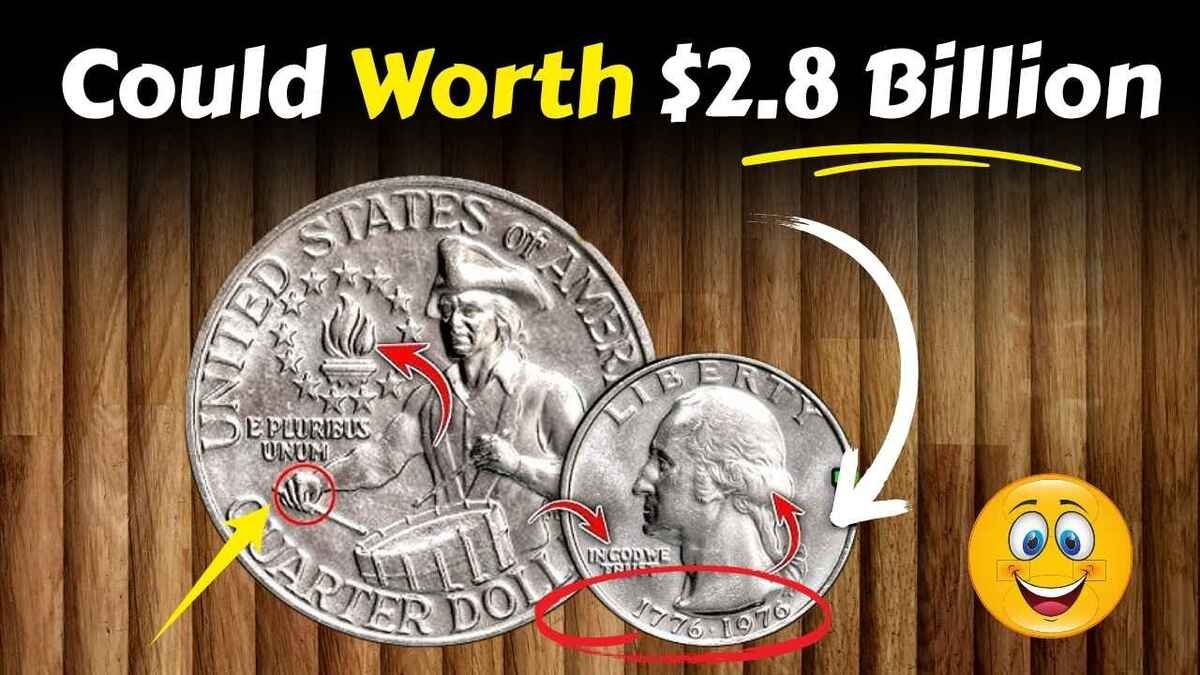If you’ve ever emptied your pockets at the end of the day and tossed your spare change into a jar, you might want to take a second look because one of those coins could be worth a fortune.
There’s been a growing buzz among coin collectors and casual enthusiasts alike about a rare version of the 1976 Bicentennial quarter. According to recent reports and ongoing auctions, a 1976 Bicentennial quarter without a mint mark could be valued at an astounding $2.8 million yes, million!
But how can a seemingly ordinary quarter be worth that much? Let’s dive into the history, what makes this coin special, and how you can check your own change for hidden treasure.
The Story Behind the Bicentennial Quarter
In 1976, the United States celebrated its 200th birthday the Bicentennial of American independence. To mark the occasion, the U.S. Mint released special commemorative designs for the quarter, half dollar, and dollar coins.
Instead of the usual eagle on the reverse (tails) side of the quarter, the Bicentennial version features a colonial drummer with a torch of victory. The obverse (heads) still features George Washington, but the date is inscribed as 1776–1976 to commemorate the occasion.
These quarters were mass-produced over 1.6 billion were made across the Philadelphia, Denver, and San Francisco Mints. So, what makes one of them worth millions?
No Mint Mark?
Most U.S. coins have a mint mark, a tiny letter on the coin indicating where it was made:
- “P” for Philadelphia
- “D” for Denver
- “S” for San Francisco
Philadelphia-minted coins sometimes had no mint mark, especially prior to the 1980s, but the Bicentennial quarters from Philly were still expected to have certain characteristics.
The rare and valuable Bicentennial quarter in question reportedly has no mint mark, is in nearly perfect condition, and may have been struck using a special planchet (a blank coin disc), possibly silver or an experimental blend. These rare circumstances combine to make it a one-of-a-kind collectible.
Some reports suggest this coin might have been part of a limited test run or mint error, never intended for general circulation. That’s what drives collectors wild rarity, mystery, and a bit of American history.
What Makes It Worth $2.8 Million?
When it comes to rare coins, value depends on a few key factors:
- Rarity – Fewer coins mean higher value. A unique or near-unique coin can fetch astronomical prices.
- Condition – Graded on a scale from 1 to 70, coins in mint state (MS) condition especially MS67 or higher are worth the most.
- Demand – The story behind a coin, public interest, and collector hype all push prices higher.
- Historical Significance – Bicentennial coins already carry patriotic and historical weight.
One 1976 Bicentennial quarter, allegedly without a mint mark and in pristine condition, has captured collector attention in online auctions and private sales, pushing estimates toward $2.8 million. While this may not be the norm, it’s not out of the question for a once-in-a-lifetime coin find.
How to Check Your Change
Think you might be holding onto a golden (or silver!) goose? Here’s what to do:
- Look for the Date: Check for quarters with the 1776–1976 date.
- Check the Reverse Design: Make sure it has the colonial drummer.
- Inspect the Mint Mark: Flip the coin to the front (heads side) and look just right of Washington’s ponytail. No mint mark? That’s your first sign.
- Condition Matters: A coin that’s worn, scratched, or damaged likely won’t fetch high value but it still might be worth something.
- Get it Graded: If you think your coin is rare, take it to a reputable coin dealer or send it to a professional grading service like PCGS or NGC.
Final Thoughts
While it’s true that most 1976 quarters are only worth their face value (25 cents), it only takes one rare specimen to change your financial life. Stories like the $2.8 million Bicentennial quarter without a mint mark remind us that treasures might be hiding in plain sight even in your pocket or coin jar.
So the next time you’re sorting through loose change or paying in cash, keep your eyes peeled. Who knows? That humble quarter might just be your lucky break.
Disclaimer: Values mentioned are estimates; actual coin worth depends on condition, rarity, market demand, and professional appraisal.



